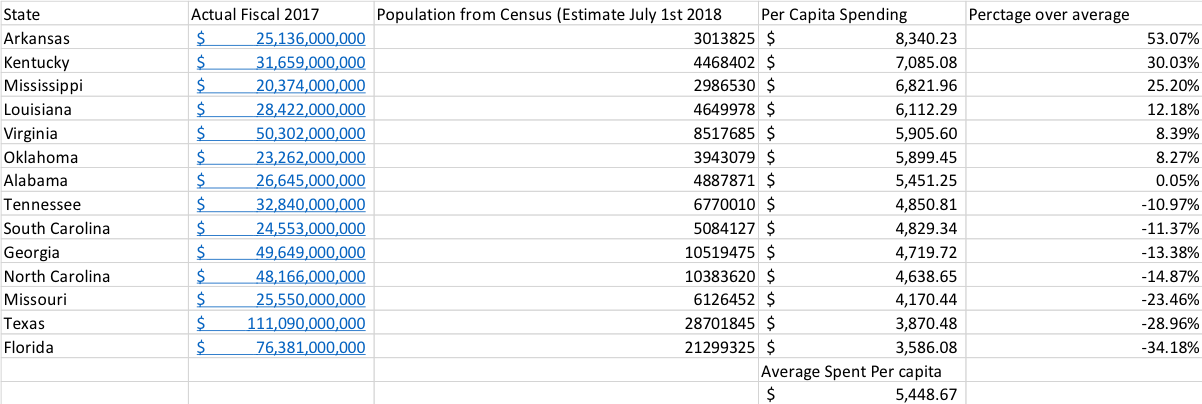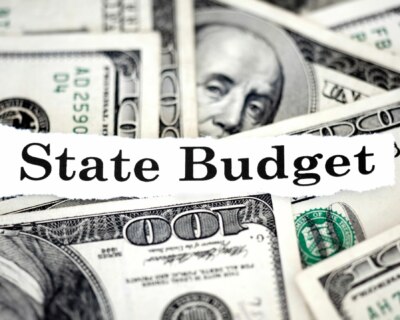
Louisianans Aren’t Getting What they Pay For
As the legislative session gets underway, there are important discussions happening about the two competing budgets filed by the legislature. This comes on the heels of Governor Edwards releasing his 2019 proposed budget just a few weeks ago. The governor’s budget proposed spending $30 billion and planned to increase education spending. But, what does $30 billion mean in context? After all, is spending $30 billion for a state the size of Louisiana a lot or a little?
Thankfully, we have the tools to put the state’s spending in context. Looking at the numbers from the National Association of State Budget Officers (NASBO), we can see what other Southeastern states spent in their budgets.
But, just seeing how much a state spends would be of little help when comparing states. After all, Texas has six times more residents than the state of Louisiana. That’s why, when looking at spending numbers between states, it’s important to compare spending per capita, which is just a fancy way of saying per person. While the census is only taken every 10 years, the U.S. Census Bureau does take early estimates of population. So, dividing total spending by the amount of people in a state will give us the amount of state spending per capita. Below are the total spending numbers and per capita spending numbers from 2017 (the last year that full data is available).

Here we can see that compared to other Southeastern states, Louisiana spends the 4th most per capita, at over $6,100 per resident. This is 12 percent more than the average spent by those same states.
So, what does Louisiana get for all that extra spending? After all, it might be worth spending relatively more per citizen if infrastructure was top rate, students have good educational outcomes and people are healthier. Unfortunately, when it comes to those metrics, Louisiana just doesn’t make the grade.
According to the U.S. News and World Report, Louisiana ranks dead last in state rankings. Some lowlights include ranking 44th in infrastructure, 49th in education and 47th in healthcare. Other rankings of Louisiana outcomes find similarresults.
Meanwhile, Florida, which ranks last at per capita spending in the Southeast, ranks 15th in the U.S News and World Report rankings.
So, what gives? To put it into perspective, assume you have two children and your neighbor has four children. You would likely spend less on your two children than your neighbor would on his/her four, however, let’s pretend you spent the same amount as your neighbor, thus making your cost-per-child spending much higher than your neighbor. Now, consider that the extra money you spend on your children is used on video games, movies and junk food, while your neighbor focuses his/her limited funding on tutoring and productive extracurricular activities for the children. Even though you’re spending more per child, isn’t it safe to assume your neighbor’s spending prioritization gives his/her children a better chance for success?
This is true for government too. Simply stated, the amount of money government spends on an area often has little relation to the outcomes of that area. As America has proven time and again, more spending on education doesn’t lead to better educational outcomes. The same is often true of other areas of spending.
As the Louisiana legislature begins to work through its budget process, it’s important to remember it’s not how much money the government spends that matters, its what the people of Louisiana get for their hard-earned tax dollars. So far, that answer has been very little.



